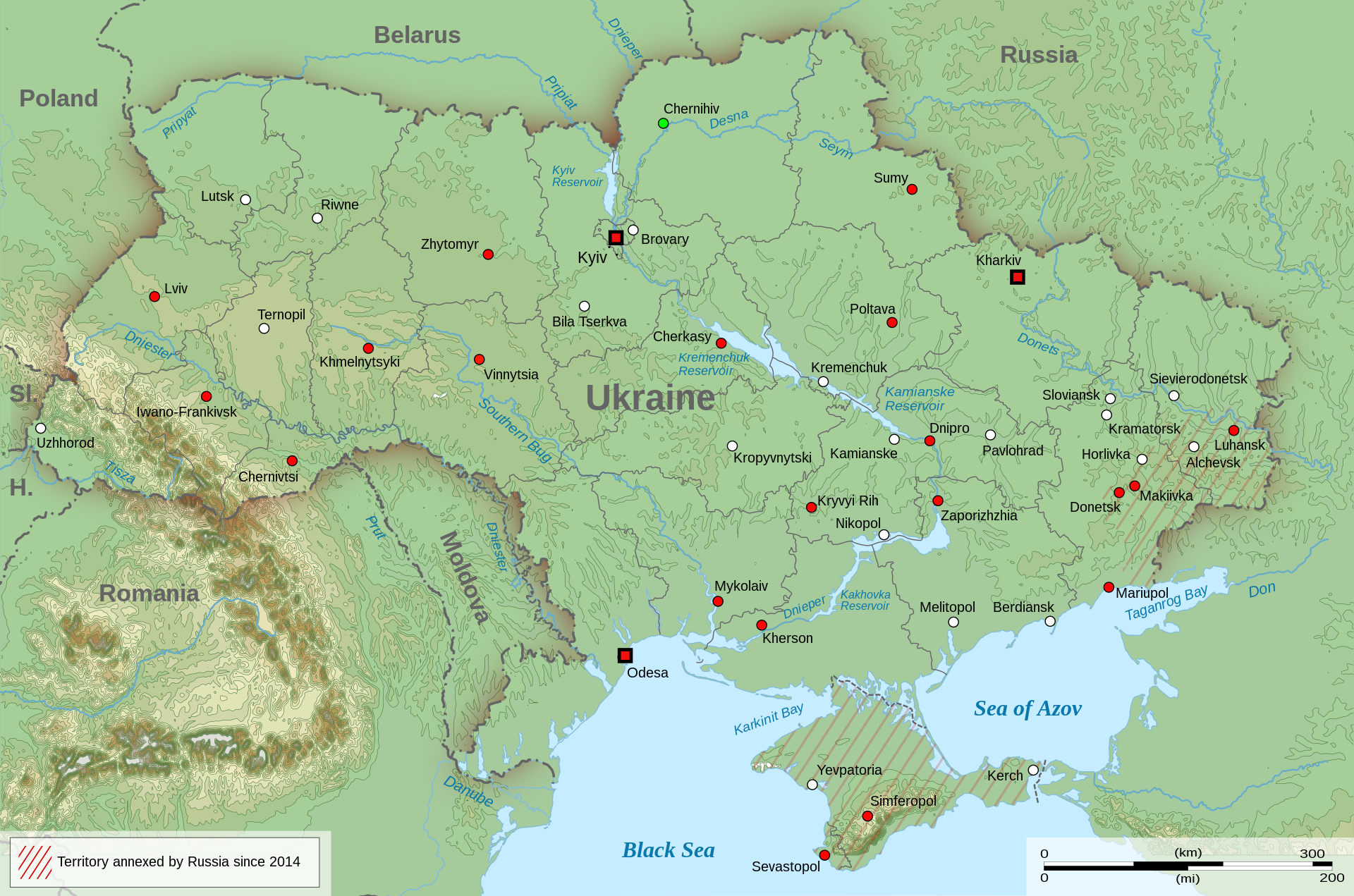David Warsh: In Ukraine, echoes of Vietnam
— Map by Amitchell125
SOMERVILLE, Mass.
The most interesting news around in August was the debut of a major series in The Washington Post about the beginnings of the war in Ukraine. Clearly it is intended to be an entry in next year’s contest for a Pulitzer Prize.
The first installment, “Road to war: U.S. struggled to convince allies, and Zelensky, of risk of invasion,” was a ten-thousand-word blockbuster.
The second, “Russia’s spies misread Ukraine and misled Kremlin as war loomed,” ran another six thousand words.
The third, “Battle for Kyiv: Ukrainian valor, Russian blunders combined to save the capital,” was similarly substantial.
And yesterday, a story appeared, not part of the series, about a disaffected Russian soldier who fled the war, featuring lengthy excerpts from his journal. “‘I will not participate in this madness.’”
Plenty of news, but the most striking aspect of the series is its architecture. The Post so far has mostly omitted the Russian side of the story. This is, to put it mildly, surprising. It is always possible that much more background narrative is yet to come. “Begin toward the end” is a story-telling recipe frequently employed in novels and films, but the ploy is not common in newspaper series. On the other hand, given the customary wind-up of important series in December, it is entirely possible that eight or even ten more installments are on the way.
For simplicity’s sake, the analytic foundations of the Russian version of the story rest mainly on three documents. The first is U.S. Ambassador William Burns’s Feb. 1, 2008 cable from Moscow, “Nyet means Nyet: Russia’s NATO Enlargement Redlines’’. We know about this thanks to Julian Assange and Wikileaks.
Burns reported that RussianForeign Minister Sergey Lavrov and other senior officials had expressed strong opposition to Ukraine’s announced intention to seek NATO membership, stressing that Russia would view further eastward expansion as “a potential military threat.” President George W. Bush ignored Burns’s advice and President Obama pressed ahead, backing a second pro-NATO “Orange Revolution” in 2014 that caused a pro-Putin Ukrainian president to seek safety in Russia., Putin annexed the Crimean peninsula in response.
The second is Putin’s long word essay from August, 2021, “On the Historical Unity of Russians and Ukrainians’’. That, Angela Stent and Fiona Hill argue differently in the new issue of Foreign Affairs, may matter much to citizens of NATO nations and, especially, the leadership of Ukraine, but Putin’s argument matters more to most Russians and some Ukrainians.
The third is the little-publicized and scarcely noticed U.S.-Ukraine Charter on Strategic Partnership of November 10, 2021. After that, there could be no reasonable doubt among the well-informed on any side that the invasion would take place.
The real news had to do with maneuvering between the US diplomats and military commanders and Ukraine president Volodymyr Zelensky that took place on the eve of the war. The U.S. emphasized the near certainty of invasion and sketched three alternative possibilities the Ukrainian might pursue: move his government to western Ukraine, presumably Lvov; to Poland, a member of NATO; or remain in place.
Zelensky chose to remain in Kyiv, while discounting the likelihood of invasion to his fellow citizens, seeking to avoid panic. In an interview with Post reporters, he was candid about his reasoning. A follow-up story, “Zelensky faces outpouring of criticism over failure to warn of war,” described the political turmoil that erupted thereafter in Ukraine. A full transcript of the interview followed four days later.
The subtext so far of The Post’s series reminded me of a little-remembered year or two in the early ‘60’s, before the dramatic escalation of the war in Vietnam took place, an episode usually glossed over, but well documented in Reporting Vietnam, Part One: American Journalism, 1959-1969 (LOA, 1998). The world was more mysterious in those days; there were fewer players on the stage.
Three correspondents for U.S. newspapers stood out for their short-lived enthusiasm for the fight against the Communists: David Halberstam, of The New York Times; Neil Sheehan, of the Associated Press; and Malcolm Browne, of United Press International. Feeding them tips were CIA agent Edward Lansdale, battlefield commander John Paul Vann, and, perhaps, RAND consultant Daniel Ellsberg, then himself a hawk. These three charismatic leaders and others on the outskirts of what was then a U.S. advisory group believed that the war against the insurgents could be won if only it were better fought. As Lansdale put it:
It’s pure hell to be on the sidelines and seeing so conventional and unimaginative an approach being tried. About all I can do is continue putting in my two-bits worth every chance I get to add a bit of spark to the concepts. I’m afraid that these aren’t always welcome.
In South Vietnam, the alliance between Catholics and Buddhist broke down after 1963, and before long the U.S. military took over the war itself. Ten more years and millions of lives were required to lose it to North Vietnam.
No such option exists in Ukraine: Ukrainians must fight the war on their own, however powerful are the weapons they are given. Domestic support for the admirable Zelensky may turn out to to be no more durable over the long haul than consensus among his NATO backers. Putin is a bully, but he seems no less formidable than was Ho Chi Minh. And though Putin is angry, he is not mad.
David Warsh, a veteran columnist and an economic historian, is proprietor of Somerville-based economicprincipals.com, where this column originated.
